Vintage photos show what it was like to visit Egypt 100 years ago
Egypt has been a tourist destination for hundreds of years.
But once the Suez Canal was completed in 1869 and Egyptology became popular, tourism skyrocketed.
Here's what it was like to visit the land of the pharaohs in the 1920s.
Egypt has been a nation in some capacity since 3150 BCE, and the land has changed hands many times in the thousands of years since. Modern Egypt as we know it was officially founded in 1954, when the British occupation of the territory finally ended, according to The Guardian.
When the British took over the region in the 1800s, they oversaw the completion of the Suez Canal. According to the journal The Suez Canal: Past Lessons and Future Challenges, the canal made it much easier for tourists to make their way to Egypt after it opened in 1869.
At the turn of the 20th century, other developments continued to make Egypt an attractive destination for visitors. After the 1919 Egyptian Revolution against the British occupation, the British Empire recognized the Kingdom of Egypt in 1922, while still keeping it under British control. That same year, the tomb of Tutankhamun was discovered, sparking a new wave of tourism.
The rise of the study of ancient Egypt, known as Egyptology, has long inspired people to visit the country, as seen in films like "The Mummy."
Tourism has remained a huge part of Egypt's economy, although it was badly impacted by the coronavirus pandemic and the 2011 uprising that toppled then-President Hosni Mubarak. The country projected 15 million visitors in 2023, and received 11.7 million tourists in 2022, according to Africa News. Tourism also brought $10.7 billion last year.
Here's what it was like to visit Egypt 100 years ago.
1920: A group of tourists gaze at the Sahara Desert from the top of the Great Pyramid of Giza, which is the tomb of pharaoh Khufu.
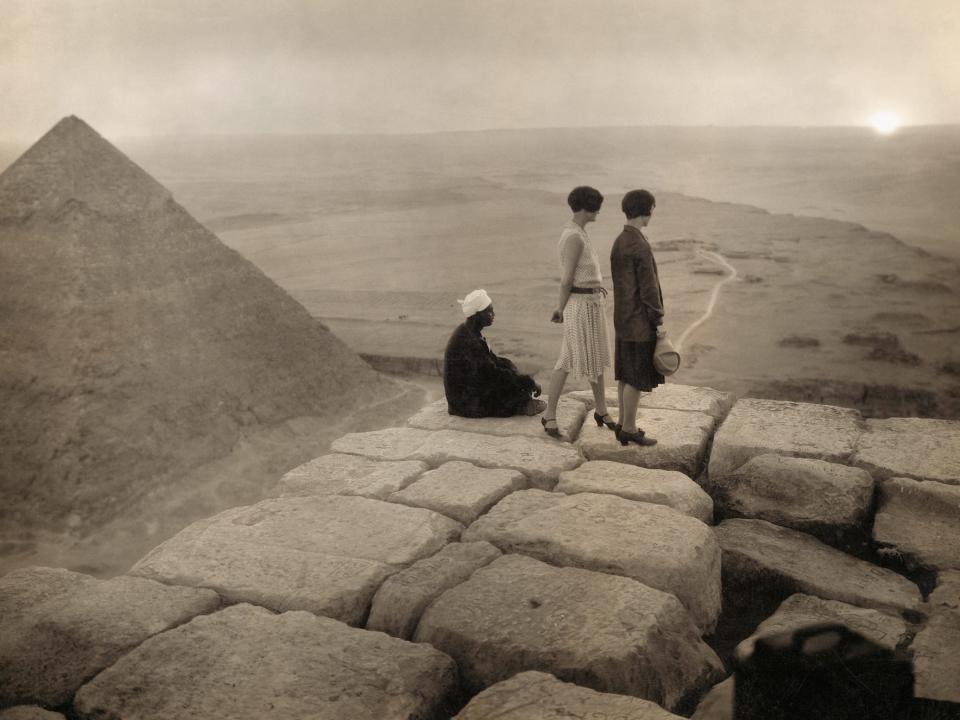
1920: A view of a railway station in Alexandria, the first of its kind in Egypt.
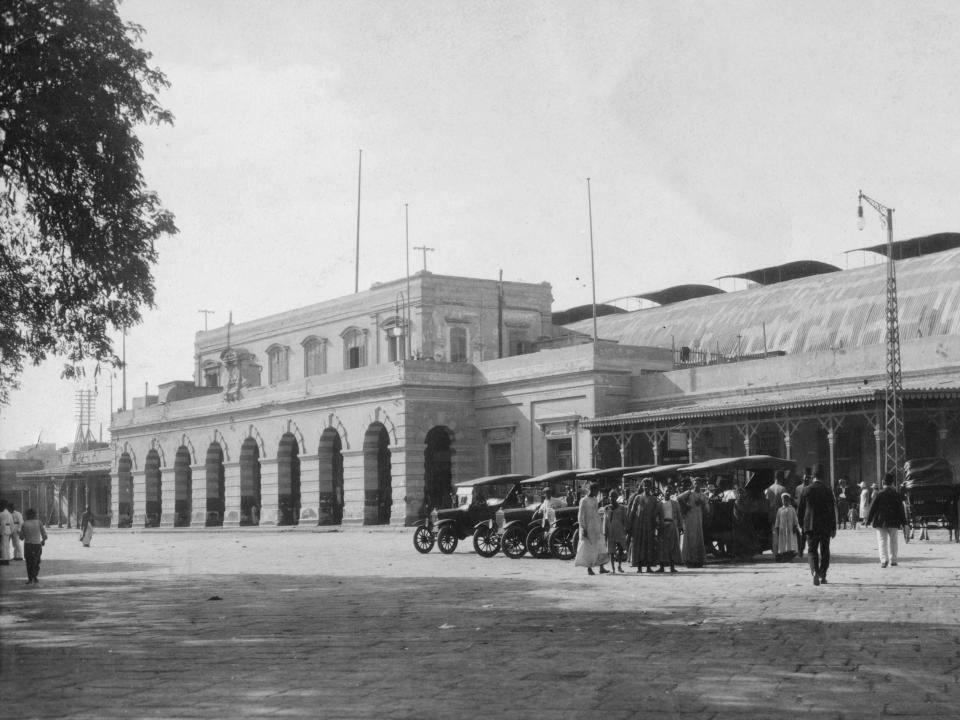
Circa 1920s: A camel rider basks by an oasis near Cairo, with the pyramids behind.
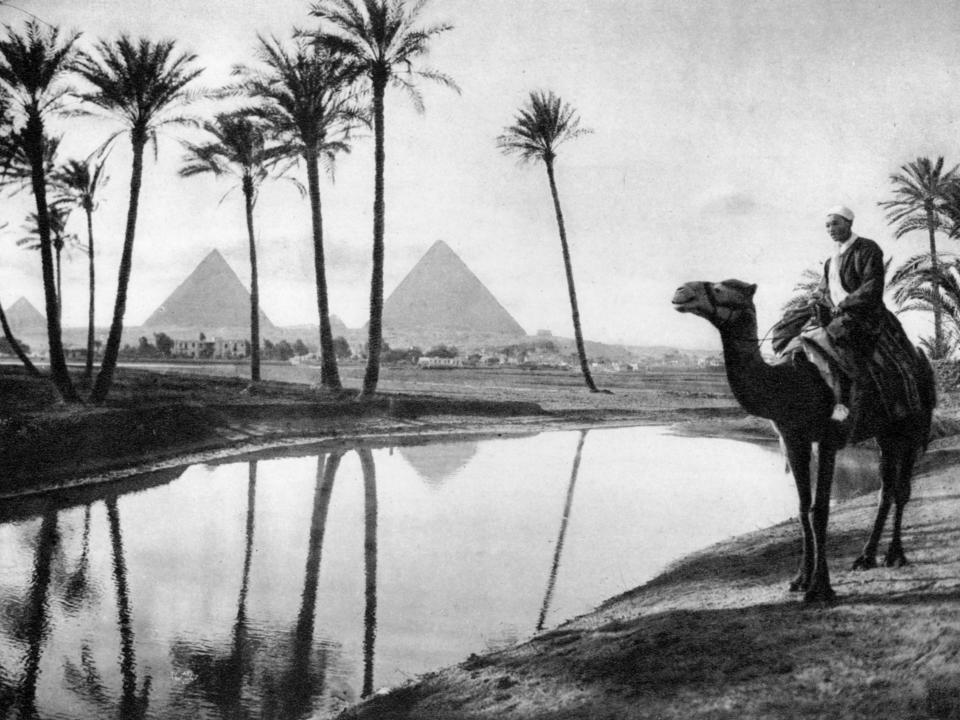
Circa 1920s: A photo shows a bustling street in Heliopolis, a suburb of Cairo.
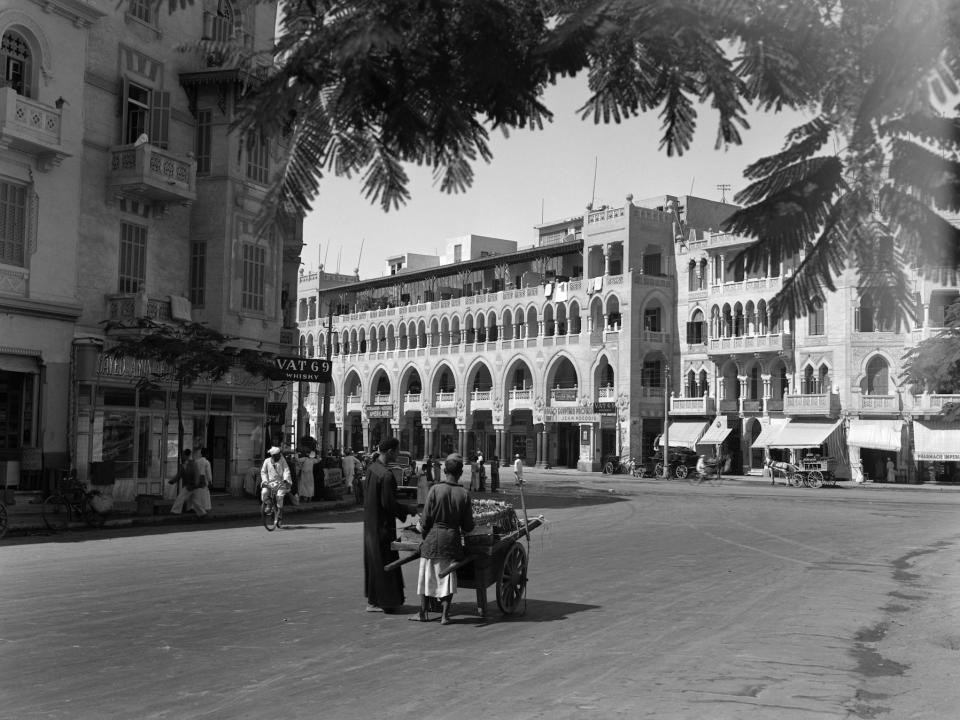
1918: A boat on the shores of Imbaba, an area of northern Giza.
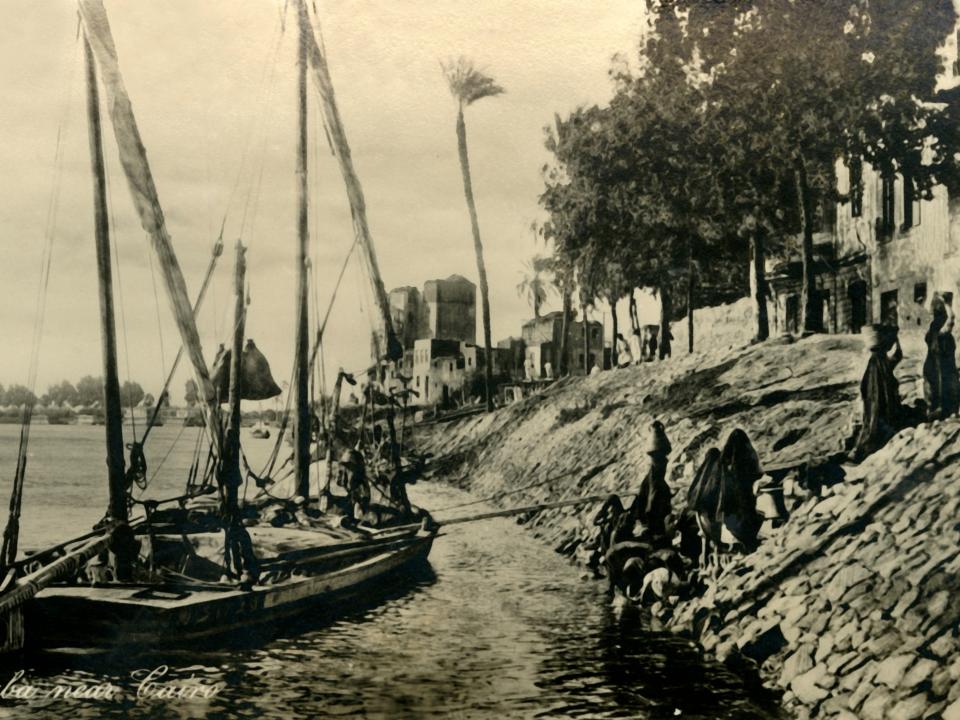
1922: A group of American, English, and French tourists try riding camels in the Sahara.
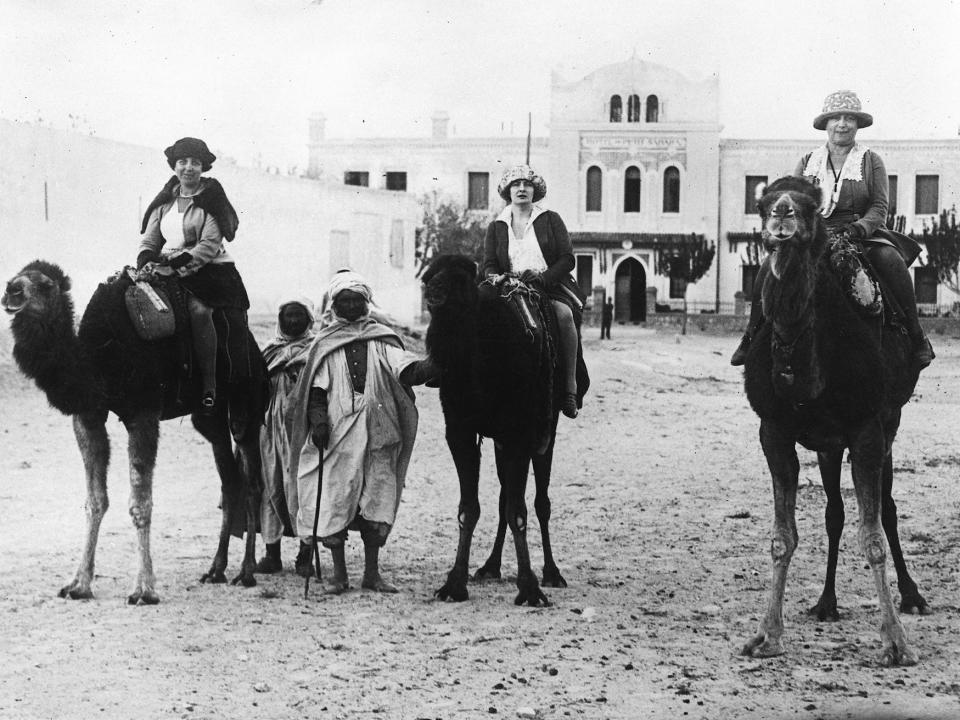
1922: The tomb of Tutankhamun, or King Tut, was discovered in 1922, 3,300 years after his death. An image shows objects in its antechamber.
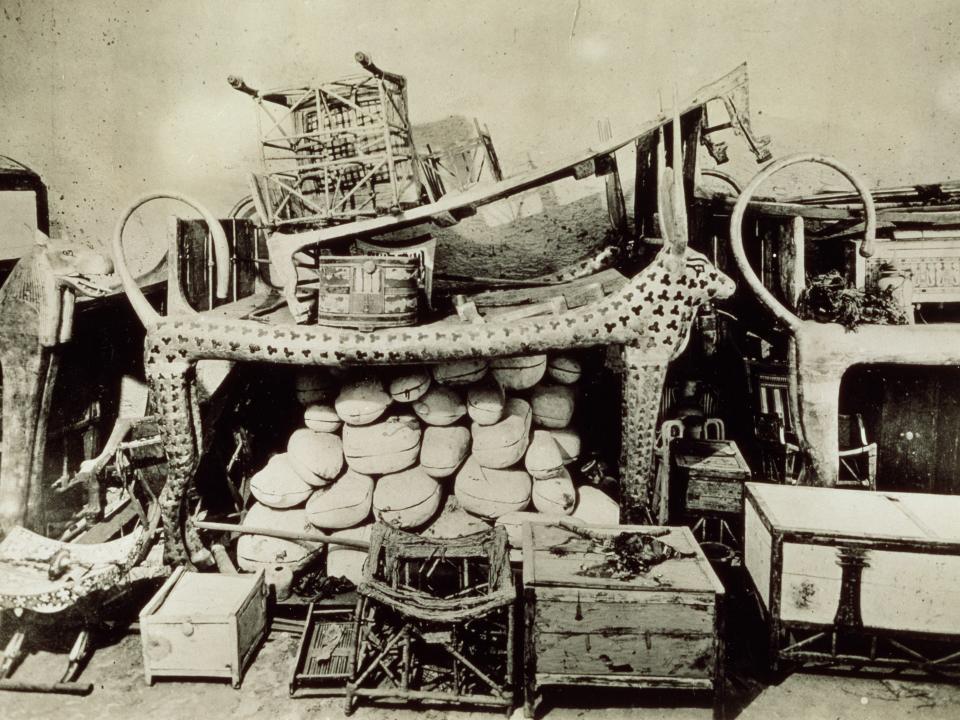
1922: An image taken by a plane shows an aerial view of Cairo.
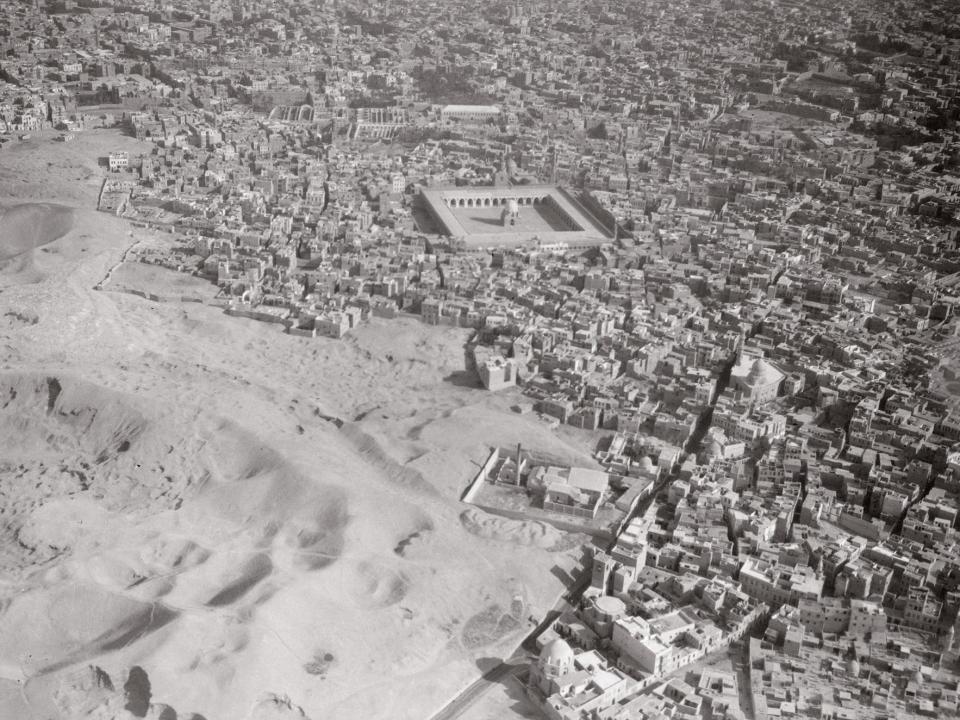
1923: American tourists visit the Great Sphinx and Great Pyramid of Giza.

1925: Archaeologists work on the site of the Great Sphinx of Giza. It was first excavated in 1817.
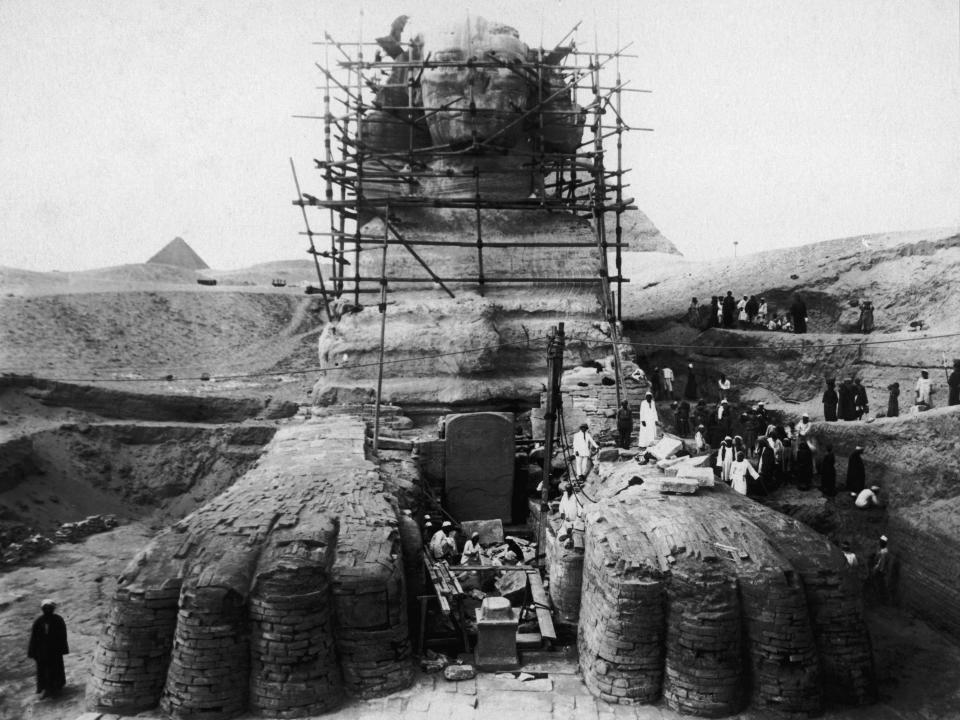
1925: A group of visitors arrives at the entrance of KV62, another name for King Tut's tomb, in the Valley of the Kings outside of Thebes.
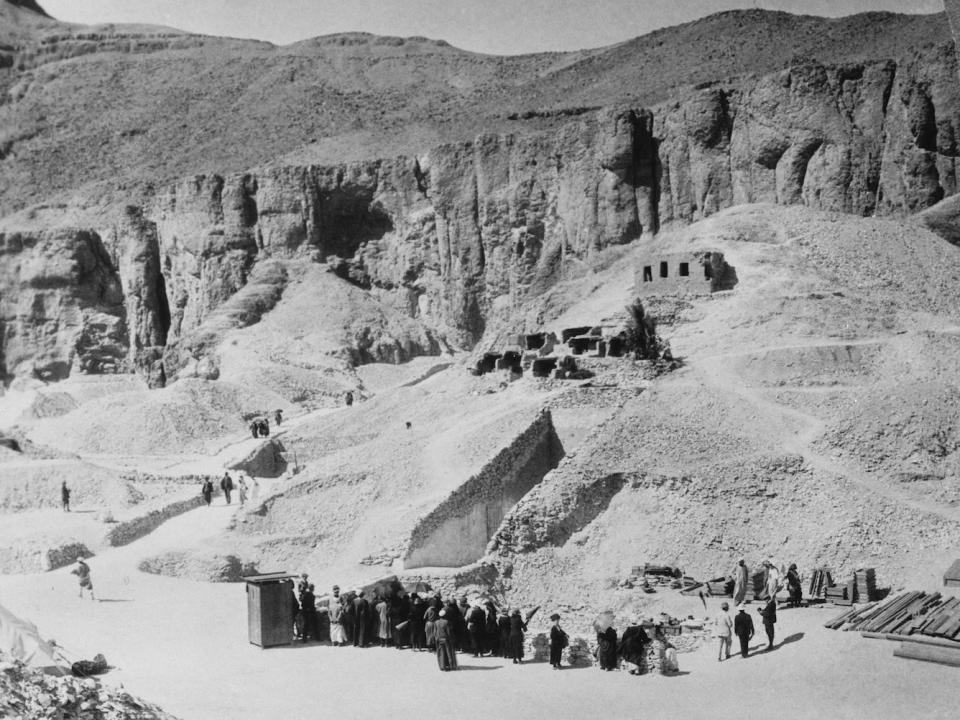
1925: A tourist poses outside of the Temple of Ramesses III, a pharaoh who ruled from 1186 to 1155 BCE, in Medinet Habu.
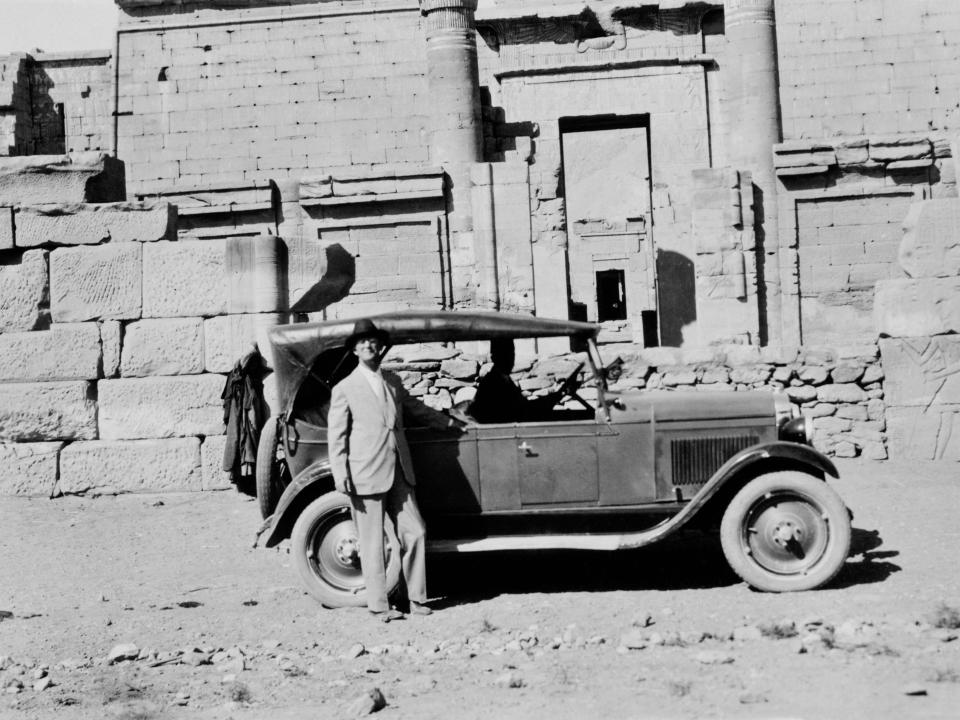
1925: A group of archaeologists photograph a funerary stele, which is a monument to the deceased.
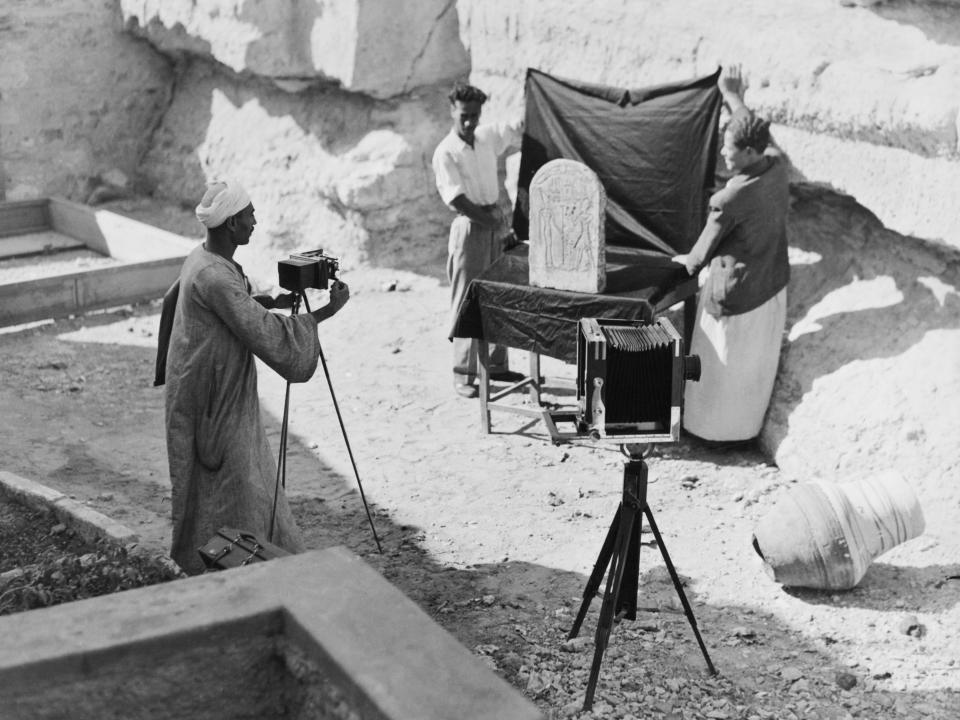
1926: A view of Port Said, a city at the northern end of the Suez Canal.
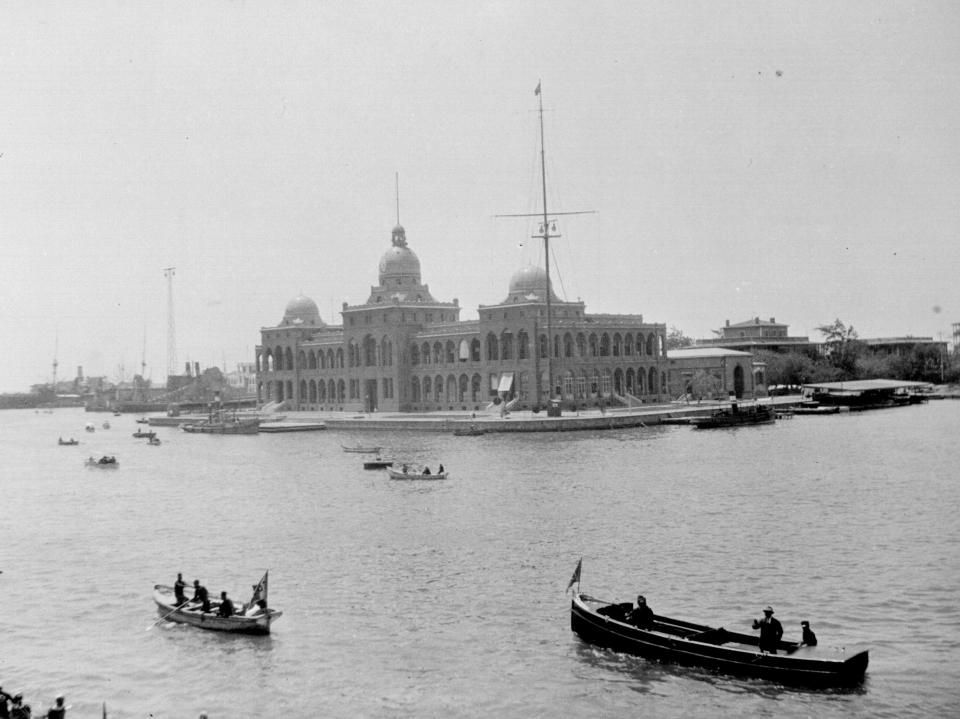
1927: A view of the flooded Nile River. The Nile floods every year in the summer, and it has been a huge part of Egypt's agriculture since ancient times.
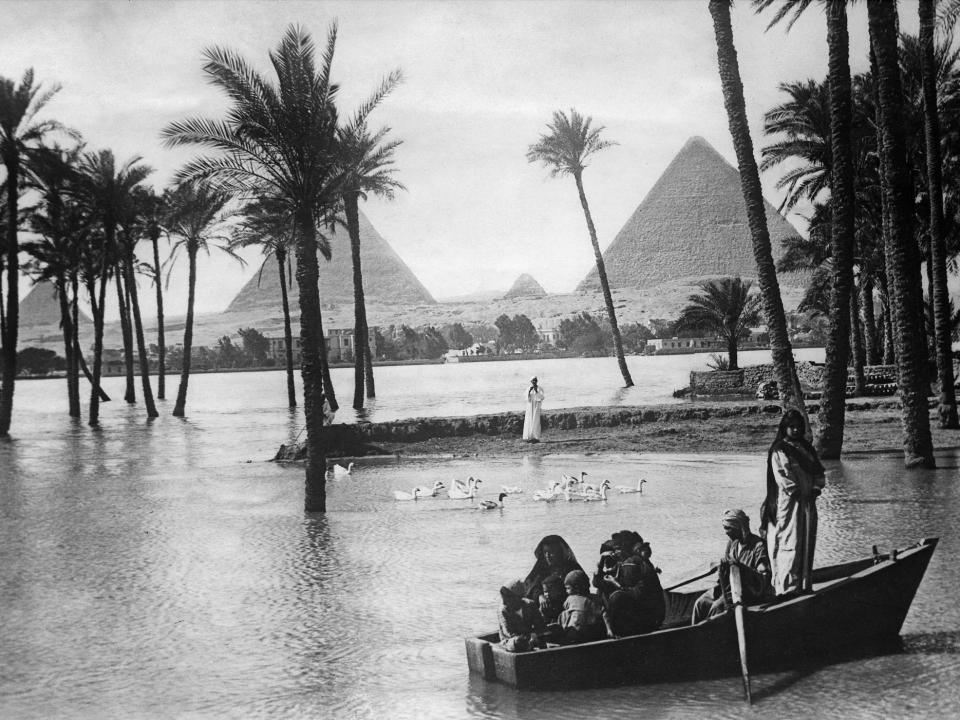
Source: BBC
Read the original article on Insider

